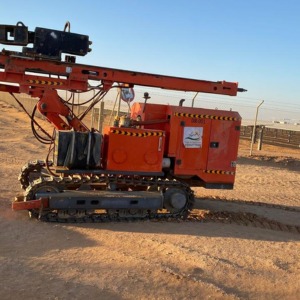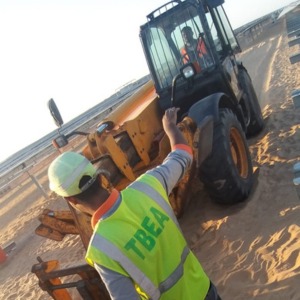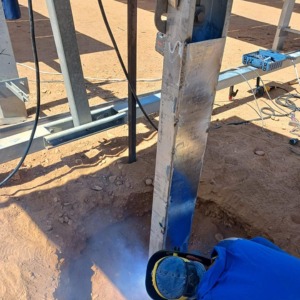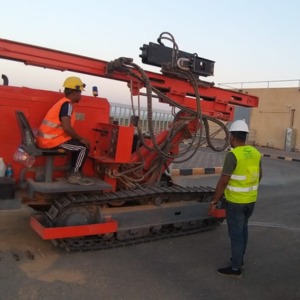







Piles Ramming:
Piles Ramming Process Description
Piles ramming is a foundation construction method used to install prefabricated piles into the ground to transfer structural loads to deeper, more stable soil strata. This method ensures structural stability, especially in areas with weak surface soils.
1. Site Preparation
- Clear the work area of any debris, vegetation, or obstructions.
- Survey and mark the pile locations according to approved drawings and layout plans.
- Ensure access roads and working platforms are adequately prepared to support heavy machinery.
- Conduct a utility check to ensure there are no underground services at risk.
2. Equipment Mobilization
- Mobilize piling rigs (e.g., diesel hammer, hydraulic hammer, or drop hammer rig) and auxiliary equipment such as cranes, pile guides, and welding tools.
- Conduct pre-operation checks on all equipment to ensure proper functioning and safety compliance.
3. Pile Alignment and Positioning
- Position the pile over the marked location using a crane or pile-driving rig.
- Align the pile vertically using a spirit level, plumb line, or laser alignment tools.
- Use a temporary guide frame or leader system to hold the pile in place during the initial ramming.
4. Pile Driving (Ramming)
- Begin ramming the pile into the ground using the selected hammer system:
- Diesel hammer: Combustion-driven impacts.
- Hydraulic hammer: Controlled, high-frequency blows.
- Drop hammer: Gravity-based impacts.
- Monitor the penetration rate (blow count per meter) to assess soil resistance and ensure compliance with design depth or refusal criteria.
- Add pile segments as needed using butt welding or mechanical joints, ensuring verticality and proper alignment.
5. Monitoring and Quality Control
- Maintain a pile driving log recording:
- Number of blows per meter.
- Final penetration depth.
- Hammer energy.
- Pile head condition.
- Conduct verticality checks during ramming.
- Inspect welds or splices (if applicable) using non-destructive testing (NDT) methods.
- For critical piles, consider using PDA (Pile Driving Analyzer) or static load testing to verify load-bearing capacity.
6. Post-Ramming Activities
- Cut off excess pile length to the designed cutoff level using oxy-acetylene torch or mechanical cutting tools.
- Treat pile heads as required (e.g., install reinforcement dowels, apply anti-corrosion coating).
- Remove all debris and restore the work area.
7. Safety and Environmental Considerations
- Ensure all operators are trained and certified.
- Maintain exclusion zones around pile-driving equipment to prevent injury from flying debris or equipment malfunction.
- Use noise and vibration monitoring if required by environmental regulations.
- Implement dust and emissions control measures for diesel hammers.

